PICK YOUR POISON: Notable Performances From Pickathons Past
With the beloved Oregon music festival finally returning, we look back at some of the memorable sets we’ve experienced over the last decade

The first Pickathon Music Festival was held in 1999, founded by amateur mandolinist/tech engineer, Zale Schoenborn as a benefit to raise money for Portland community radio station, KBOO. For half a decade the event would take place at Horning’s Hideout, the cattle ranch-turned private park known for hosting the bluegrass-themed Northwest String Summit and, for several years, home to an annual run of String Cheese Incident shows. These were the early days when Pickathon was still fumbling toward its identity and attendance was low, so when the Horning family was tasked with scaling back to only 2 multi-day concert events per year, Zale and his crew got the boot. The news came only 2 months before their scheduled 2005 festival date. A blessing in disguise, the temporary relocation pushed organizers to consider elements they never had before. Along with tackling aspects like water and electricity for the first time, they really began thinking about the festival as an overall experience and imagining the possibilities. It wasn’t until the following year that they found their permanent home on the Pendarvis family’s 80-acre organic farm in Happy Valley, Oregon. This new framework allowed them to pivot into new directions that seemed unattainable previously.
Schoenborn and his team are driven more by a grand vision than anything monetary. This truth is evidenced by the way they managed to sustain themselves during that growth period when they weren’t yielding the desired attendance numbers to keep things going comfortably. While utilizing everything from grants and natural resourcefulness to forming partnerships with like-minded individuals and institutions, they were simultaneously rejecting numerous potential avenues of revenue sheerly on the basis that they could conflict with the idyllic environment that they envisioned. No sponsorships or corporate entities can be found at Pendarvis Farm, only stations with free fresh water, along with high-quality beer and food options from local companies with no festival markup. On-site camping is free and, even though they could technically pack at least 5 times as many attendees on the premises, they’ve chosen to cap ticket sales at around 3,500 to preserve the experience. Plastic and single-use items have been eliminated; there’s no trash anywhere other than the minimal amount individuals may bring into their campsites. There’s also no chain link fence closing festival goers in like caged animals or any harsh boundaries around the stages. Meanwhile, innovations they’ve made in sustainability and elsewhere are not only being adopted by other festivals, but by outside communities at large. These creations born from the minds of the founders range from the pull-chain shower setup to the Frqncy Live app. The latter offers those unable to attend the opportunity to stream the festival live by selecting between a curated schedule of sets or an all-access package that allows them to hop around between stages, at will.
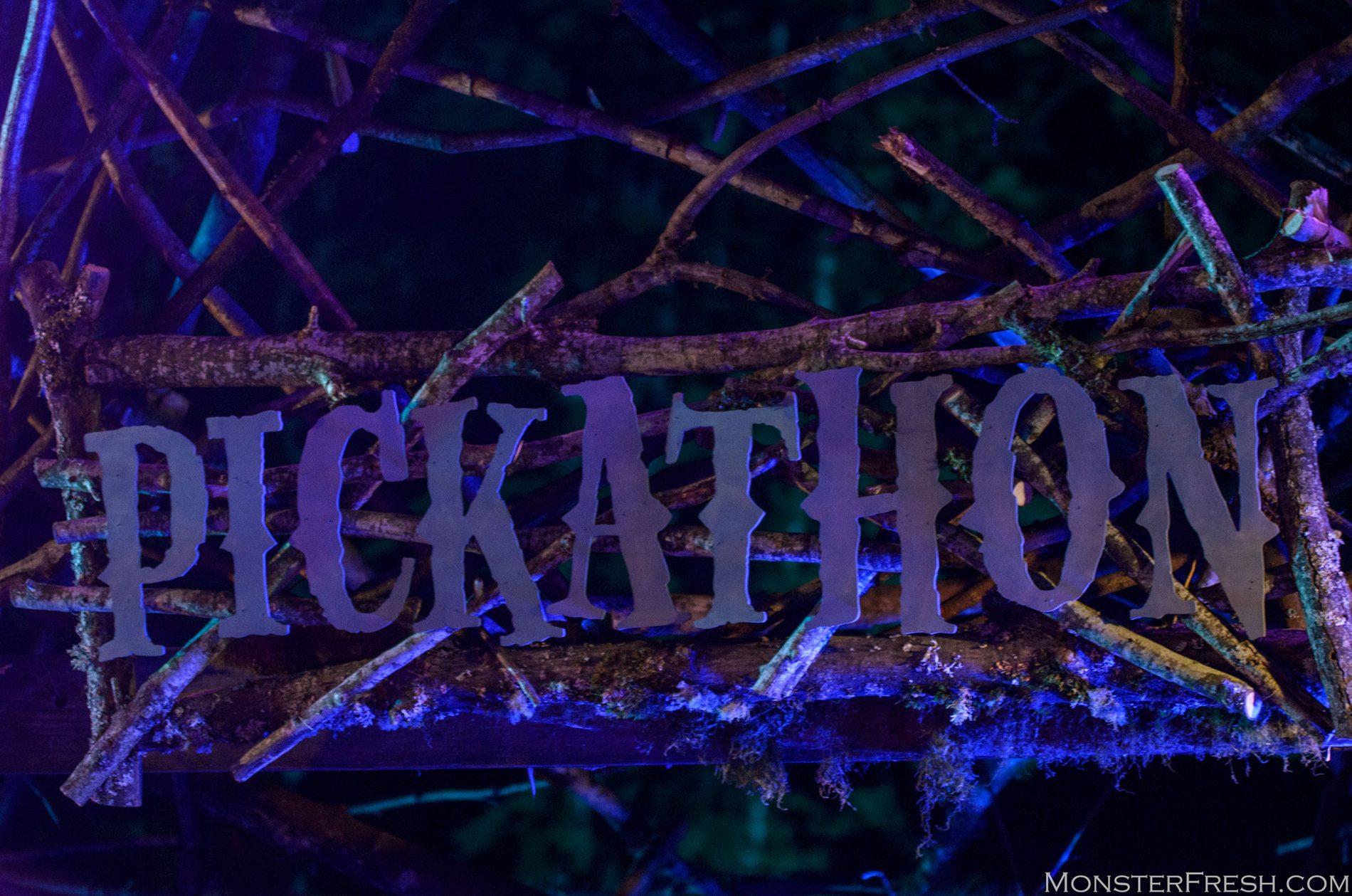
From its inception, the mission was never for Pickathon to grow to compete head-to-head with the major corporate festivals. The idea was to give birth to something much more ambitious and enduring; something greater than anything the organizers had ever witnessed outside of their own imaginations. Whenever they’ve sought to achieve something that had no prior examples to draw from, they’ve simply utilized the same problem-solving skills that Zale employs in the tech world to push forward and figure it out themselves. Each obstacle or setback is recognized as a new challenge and integral part of the path that has helped forge their unique identity while transforming even the most jaded and cynical of haters (myself, included) into diehard believers eager to travel out to hike around in the dust each year just to be a part of it. One aspect of that evolution relates to just how much value Schoenborn and his team place on the feedback of this vocal community. Those results can be seen in the constant adjustments and improvements made from year to year and how, when some new idea doesn’t pan out perfectly, they aren’t afraid to rewind and re-adjust, if necessary.
After a 2-year hiatus due to the pandemic, Pickathon will be taking place again from August 4-7; this time with a redesigned layout that is further integrated into the natural topography of the landscape. We started covering the festival back in 2012 and, since its return is so rapidly approaching, we’ve decided to look back at some of the standout performances that we’ve experienced at Pendarvis Farm over the last decade.
FEIST In The Woods [2013]
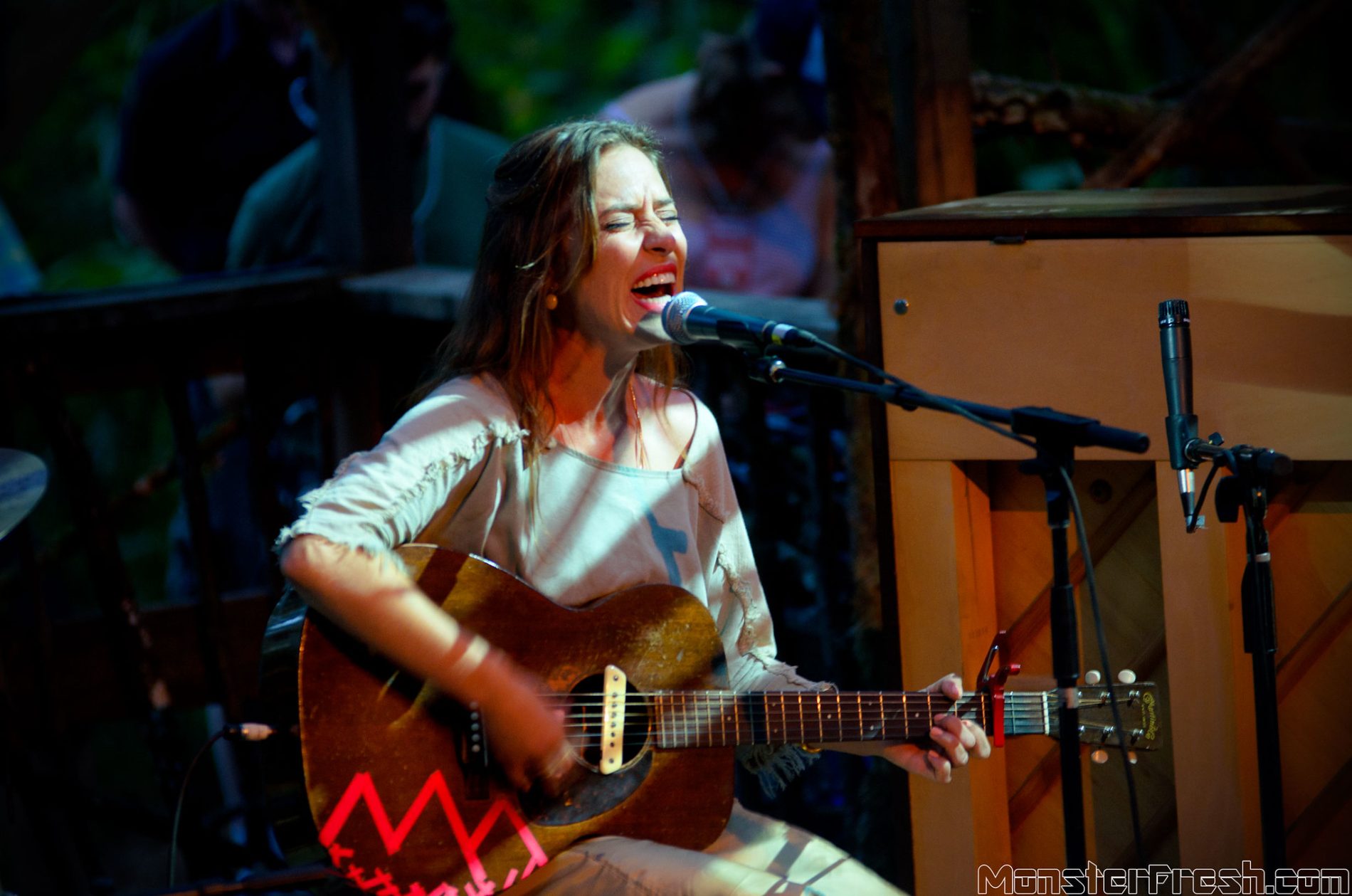
2013 was a turning point for the festival, as they had finally begun to entice some higher profile names to come out to the farm. One of the major gets for that year was Grammy-nominated solo artist and Broken Social Scene member, Feist. As with the large majority of acts booked, the Canadian songwriter would perform twice over the weekend; each time on a different day and stage. The beauty of this system isn’t only that it helps minimize potential conflicts in the schedule, but also that it provides the opportunity to witness the same act in two very different environments. Some artists really embrace the opportunity to offer something markedly different from one set to the next and Feist was no exception.
If I’m ever preaching the gospel of Pickathon and trying to convince someone that it transcends the typical festival culture they’ve grown to despise, I usually just pull up a photo of the Woods stage. Resembling some sort of magnified faery village, this domed structure is constructed from branches and located in a clearing in the middle of the woods. This is where Feist would be performing her first set of the weekend, which she explained was also the first solo acoustic show she’d played in seven years. The intimacy was unreal with the audience fixated on the stage like elementary students crowded around for storytime. Midway through, Feist was joined by her drummer and pianist, which resulted in her climbing onto the upright in full nightclub songstress mode to croon out “Limit to Your Love.” We sat on hay bales holding our sleepy son — just shy of 2 years old, at the time — while tears streamed down the face of the woman next to us.
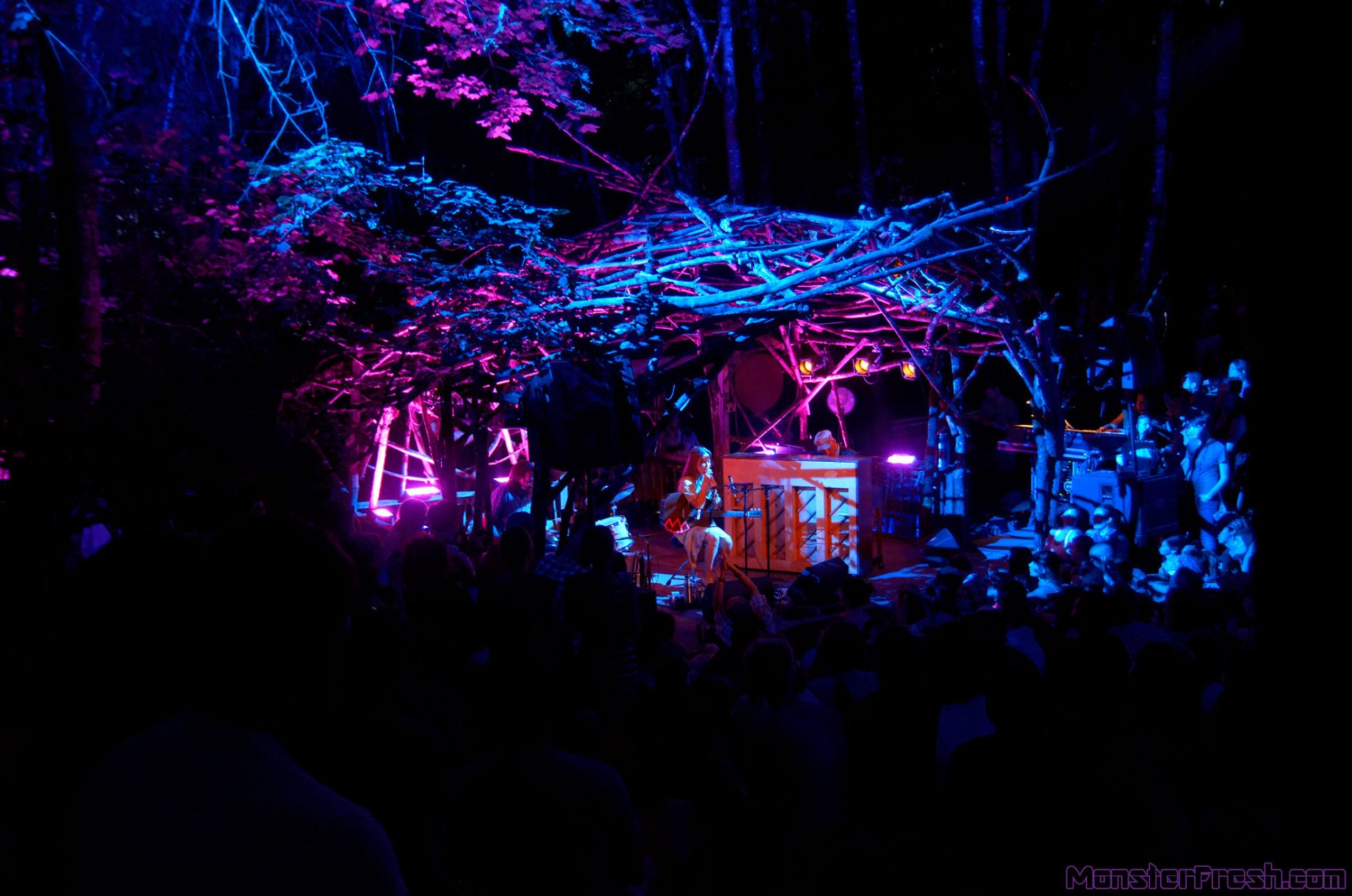
From the powerful sincerity of the music and the awestruck crowd that it hypnotized to the cool summer wind and the manner in which the stage lights gently swept across the forest leaves, everything seemed to align in a tranquil, yet exhilarating harmony. I would come to discover that things tend to align like that quite often at Pickathon — it’s by design. Filmmaker, Harmony Korine has spoken of his approach to his own craft by stating that he aims to simply put all the components together for a scene and then wait for them to collide with one another (more specifically, he speaks about mixing chemicals and documenting the explosion). Pickathon adopts a similar approach, as it’s never really about one singular element; the magic is activated in the way and moment that all of the pieces intersect. Some magnificent alchemy is required to generate the sort of collective experience that, when successful, becomes a fully-immersive participation in mindfulness for everyone involved. Suspended in these moments, the outside world evaporates and all the best parts of your humanity that have been muted and withered by a suffocating and dysfunctional socio-economic system, have been temporarily reconstituted. That’s new-age bullshit speak for disconnecting from the stresses of life in a healthy, grounding, and encouraging way that leaves you feeling reconnected to something greater. Think Bill Murray at the end of Scrooged, rather than a shameful drunken mess covered in spray tan. It’s the difference between being present and escapsim and, if there’s one purpose to the entire experiment — be it this festival or our existence as whole — this has to be it.
Early that morning, we received an update that media would be restricted from backstage access, but it pertained exclusively during Feist‘s set. The ironic part is that I was later told by volunteers that she refused a gator ride to the stage, because she wanted to walk uphill on the forest trail for herself. Her desire to connect directly with the crowd remained evident the following night and it’s something that the setup on Pendarvis Farm helps facilitate. During a fully electric performance with large brightly-colored led screens behind her, Feist announced that she was coming to the end of an extensive tour and that she wasn’t going to be doing shows again until she completed a new album. She later rescinded that claim by offering to come back and play Pickathon the following year. She had already told us that it was the best festival that she’d ever been to
Mac DeMarco On The Starlight Stage [2014]

It can be tricky when attempting to sell people on an idea that’s so innovative it’s not only without precedent, but actually aims to be the antithesis of the go-to model that has proven so (monetarily) “successful” within the same industry. While most festivals rely on booking established industry darlings to sell tickets despite a shit-all environment, fans travel to Pendarvis Farm expecting an environment that’s actually worth visiting on its own merit. But while it’s true that Pickathon really is about the experience more than anything, that doesn’t mean that the artist selection is insignificant or that it doesn’t play its role. If anything, the highly eclectic roster of talent represented from year-to-year reflects a lot more time, care, and consideration than simply throwing a wad of cash at the same bigshots printed in large font on every other festival flyer. A quick glance at the Pickathon schedule might suggest an underwhelming year largely overrun with “no name” acts, especially compared to lineups from the past which could boast the inclusion of such artists as Billy Strings, Courtney Barnett, Khruangbin, The War On Drugs, Angel Olsen, Kikagaku Moyo, Big Thief, Kamasi Washington, Black Pumas, Parquet Courts, Open Mike Eagle, Sturgill Simpson, Leon Bridges, Thundercat, Margo Price, Lucy Dacus, The Marias, Milo (R.A.P. Ferreira) and the list goes on. One critical aspect to consider, however, is that the large majority of those musicians I just listed possessed nowhere near the level of popularity or name recognition back when they performed on Pickathon lineups that were just as easily dismissed as unimpressive at the time. In retrospect, they’ve been hitting home runs for a solid decade. It’s actually a point of pride for the festival to introduce new exciting music to their audience by providing a platform for under-the-radar acts that they truly believe in. One such talent that they managed to catch during a sweet spot in his elevation is Mac DeMarco.
His critically acclaimed sophomore LP, Salad Days hadn’t even been released by the time DeMarco‘s name was announced for the 2014 festival. He wasn’t a complete unknown, at the time, but he was still at a point where he could sit comfortably in a sparse crowd watching a daytime set at the Woods stage without signs of anyone else recognizing or approaching him. This level of anonymity wouldn’t last much longer. As we’ve witnessed with numerous other Pickathon performers, it would take only a matter of months before he began filling substantially larger venues than he’d become accustomed to. An entertainer through and through, the Canadian “jizz jazzer” was like a relentless snowball, wielding a deadly combo of impeccable stage presence and songwriting chops to plow through crowds, steadily picking up new additions to his evergrowing fanbase as he rolled around the country. A somewhat literal representation of this is when he finished off his set in the Woods by crowd surfing to the far end of the perimeter and back. This could easily be considered a standout moment in the festival’s history, but out of all of his sets — he returned with stellar performances on the Treeline and Main stages, 2 years later — it was his Starlight Stage appearance that stuck with me the most.
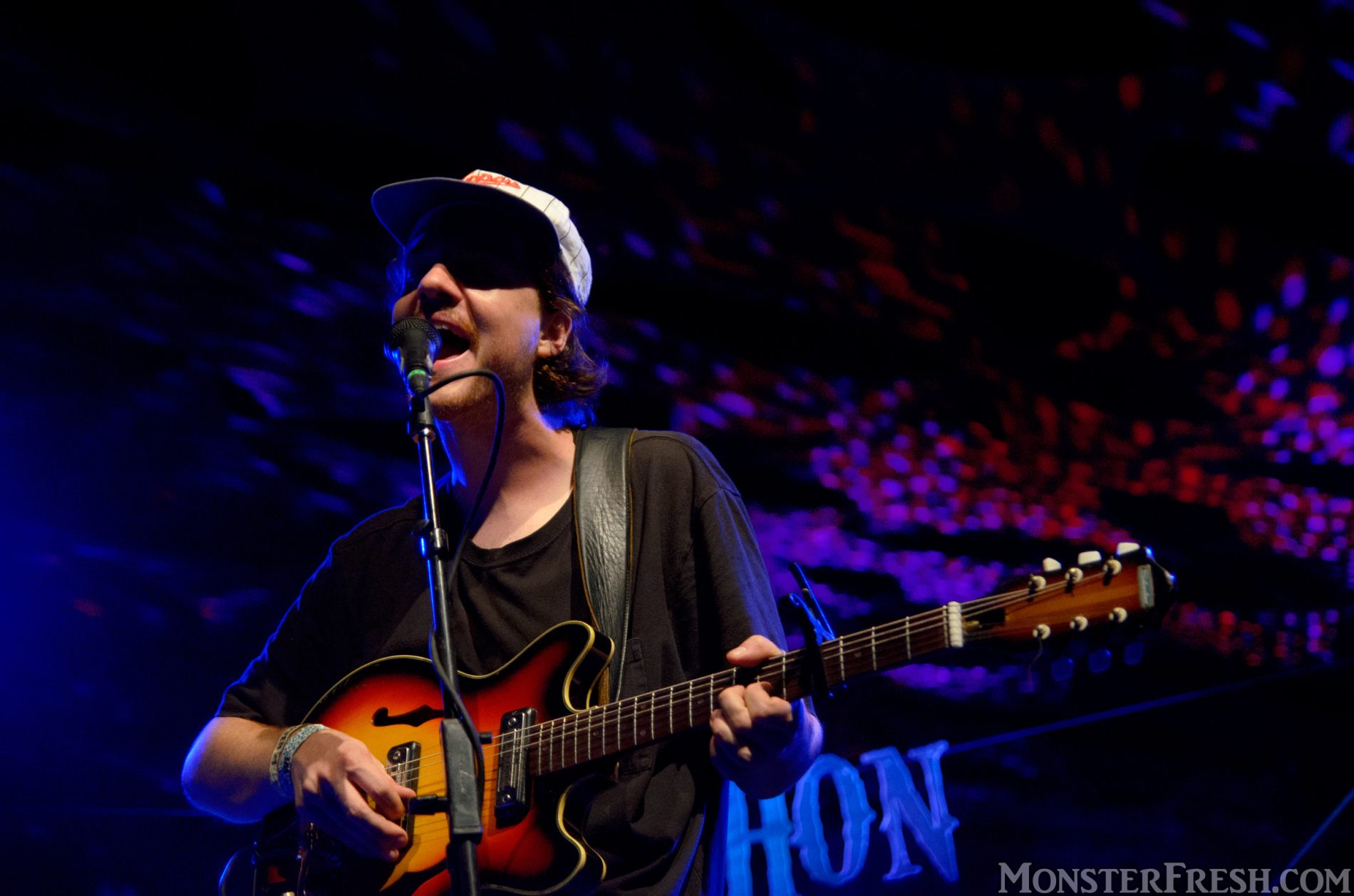
Located by the food vendors, the open platform of The Starlight Stage would go live after the main-stage area shut down for the night. One of the most underrated stages on the premises, the Starlight seems to be getting scrapped for this year’s festival and I’m curious about what will replace it. At any rate, this is where Mac played his second set of tunes “about cooking meth” and “smoking cigs,” while chugging beer straight from a Rubbermaid pitcher and handing out pizza slices to the crowd. This would be the final show for Peter Sagar as the band’s guitarist, before heading off to pursue his bedroom R&B project, HOMESHAKE, full time. To insure him a fitting sendoff, the band ended with an unorthodox medley consisting of Rammstein, “Taking Care of ‘Bidness’,” The Beatles’ “Blackbird” (with Staind lyrics), and Tool, which built up to Sagar leaping onto the audience, while rapping “Break Stuff”—the Limp Bizkit song credited with inciting the Woodstock ’99 riot. They finished things off by performing Shaggy’s forgettable rendition of Juice Newton’s “Angel Of The Morning,” which they dedicated to fellow 2014 performer, Angel Olsen.
One of the best things about a live show is when you can sense that a performer is getting some authentic enjoyment from playing it. Festival dates are generally just another tour stop for musicians, so it’s pretty rare to see them stay for the duration of the weekend as they do at Pickathon. The calming landscape and the way that they are treated with genuine respect, while being provided with amenities like freshly prepared meals and a massage area all translate into the artists’ overall demeanor, which, in turn, influences the performances. As an unrestrained showman who naturally works to dissolve the barrier between himself and the audience, Mac DeMarco was tailor-made for Pickathon. His late-night set closing out the final day of a long weekend felt like a triumphant punctuation for all of us that were plenty worn out, but still hanging on.
TY SEGALL & THE MUGGERS In The Galaxy Barn [2016]
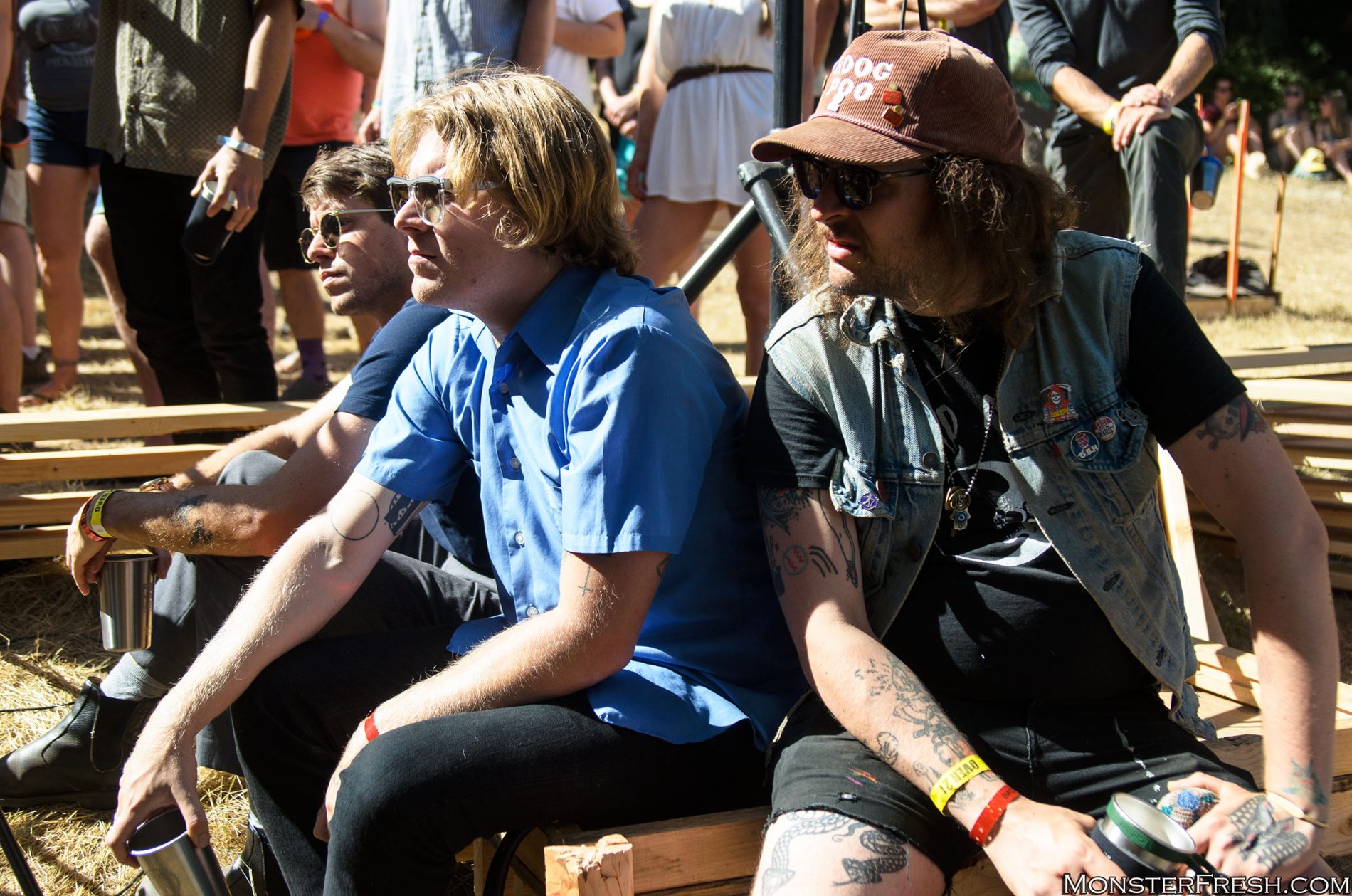
There was a good period of time when it was always safe to assume that Ty Segall‘s name would wind up on the lineup in one capacity or another. In 2016, he was playing with The Muggers, a garage-psych super group comprised of friends/collaborators/Pickathon veterans, Mikal Cronin; Kyle “King Tuff” Thomas; Emmet Kelly aka Cairo Gang; and Wand members, Cory Hanson and Evan Burrows. That same year, I found myself speaking with him near a pizza vendor and he told me that he’d played just about every festival in the country and they were pretty much “all shit, except for this one.” King Tuff held a similar love for Pickathon, even taking a DJ slot, one year, just so he could return. Cronin‘s first year performing was 2014 and, when I ran into him, Tuff, and Segall during a Parquet Courts set in the woods, he told me that he was coming back the next year whether he was playing or not. There’s even a Willamette Weekly article where Zale is quoted as saying, “I think the Muggers were put together for Pickathon so they can all find a way to come [this year].”
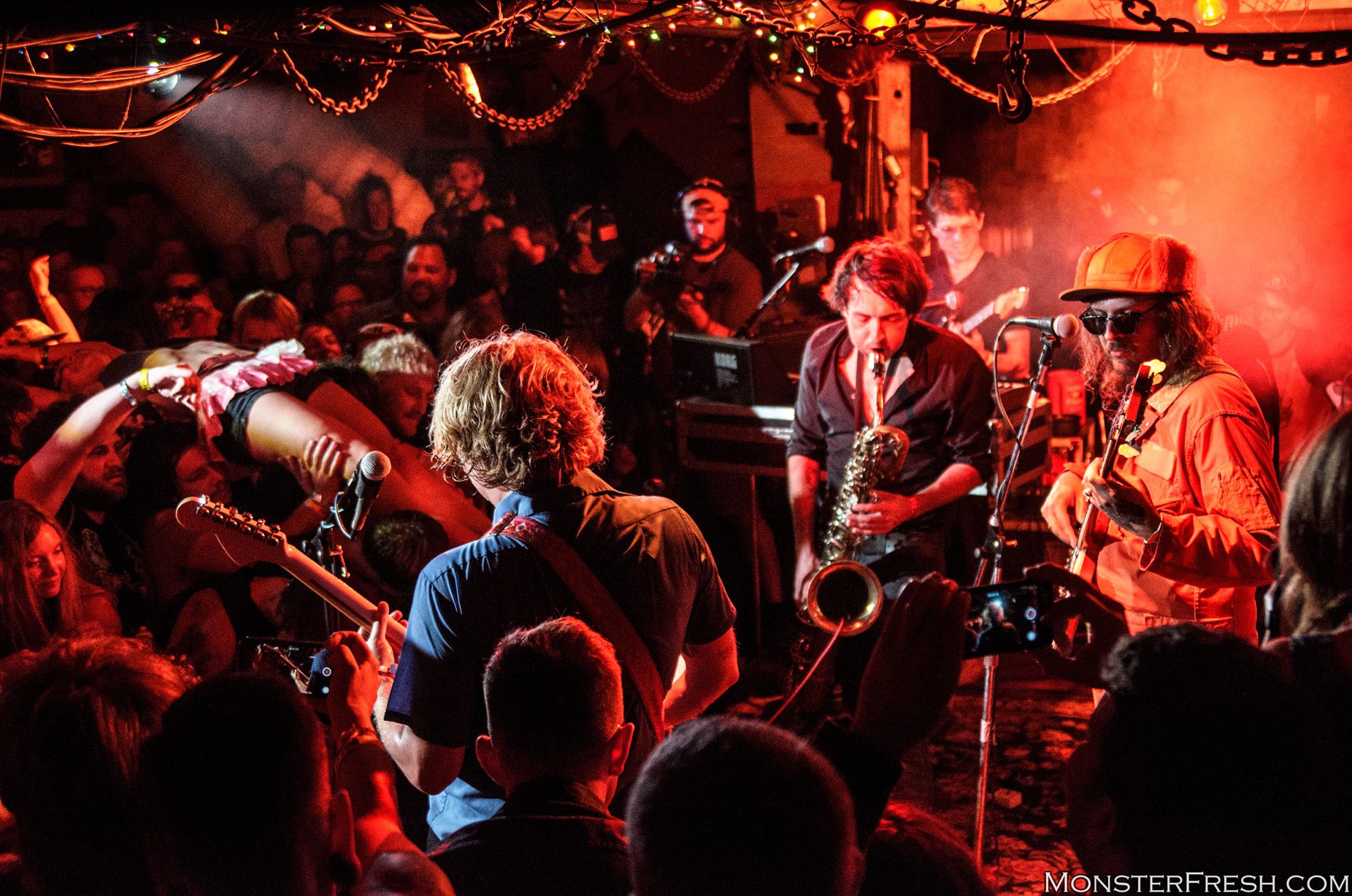
The Galaxy Barn looked ready to burst, but we managed to squeeze into the back/sidestage area for their 1am set. As I explained in our original review, “Segall doesn’t touch a guitar for most of their shows, but he doesn’t really need to, with Tuff, Emmett Kelly, and Cory Hanson — who alternates, occasionally, from behind the keys — all capable of tearing out some blistering solos. This band is full of multi-instrumentalists and it would almost be too much, if too much wasn’t their bread and butter.” This shit was a barn burner, a cyclone of controlled chaos. Ty played to the frenzied crowd of flying bodies by screaming, pointing, and laying his hands on foreheads like some maniacal evangelist, while the band was going full-steam in all directions. Cronin squawked on his sax, rotating his bass to King Tuff whose guitar went to Segall. They welcomed a girl on stage to don a spacesuit and “blast off” back into the audience during a rendition of “L.A. Woman.” They played Black Sabbath‘s “N.I.B.” in a medley with “House Of The Rising Sun.” They basically did whatever the fuck they wanted and what they wanted to do was show up and deliver.
Out of all the great performances over the years, the reason that we chose to include this one is as much about what it represents to us as anything. Collectively, The Muggers epitomize a very specific aspect that has become so integral to the festival and in the expansion of its depth and dimension. Most importantly, these guys clearly came with a mission. When you feel like you’re a part of a community and you love it, it’s natural to want to contribute to its preservation and nourishment for the future. Thousands of people volunteer each year to help sustain the festival they love. My thing is that I click away on my camera and then write long drawn-out bullshit like this about it. Everyone in the Muggers helped define Pickathon by actively shaping it into what they wanted it to be. They didn’t simply take a paycheck and perform some routine set for someone else’s festival. Instead, they claimed a space for themselves in this world and took ownership. Thoroughly acquainted with the setup, they brought the party as if they were throwing it in their own living rooms, and unleashed calamity just the way they drew it up on the chalkboard. Unfortunately, that crew has been noticeably absent for the last few years, but if they never return to the farm, they’ve already left their stamp. Those fuzz rock crazies will be forever embedded into the fabric and the history.
CHARLES BRADLEY On The Mt Hood Stage [2017]

Charles Bradley didn’t release his debut album until he was 62 years old, but when No Time For Dreaming hit shelves in 2011, it garnered universal acclaim. From a young age, the soul singer lived a tumultuous life enduring abject poverty, homelessness, and abandonment from his mother, not to mention unspeakable hardships like the murder of his brother. Bradley was discovered by Daptone Records co-founder, Gabe Roth while performing as a James Brown impersonator under the name “Black Velvet,” but he floated in limbo with the label for a good decade, as they weren’t sure exactly what to do with him. It wasn’t until Charles began working with guitarist/producer, Thomas Brenneck (The Menahan Street Band, The Budos Band, The Dap-Kings, etc), who encouraged him to tell his own story, that he finally began to find his voice and a lifetime of pain and struggle could be heard unfurling in his music. Backed by an impressive cast of musicians from the Daptone stable, he would create timeless gems filled with horns and organ grooves that could possess your feet like the holy ghost or, at other times, pierce you straight through the heart. And at their heart, his songs are about hope and love, kindness and survival. Bradley‘s story is one about resilience and the music that he created projects that message. It is meant to heal. His work can connect on first listen, but once you know the real story behind some of the lyrics, the agony that fuels his raw, weathered howls becomes that much more devastating and palpable. If you’ve ever caught one of his live shows, you’ll know they were exponentially even more powerful and affecting.
There were certain things that you knew you were getting with every Charles Bradley show, but the upside is that you always knew that it was going to be great. When he played the Pickathon main stage, he was backed by his band, The Extraordinaires who, in typical fashion, jammed by themselves a bit before asking us to welcome “THE SCREAMING EAGLE OF SOUL!!!” to the stage. Cue Charles strutting out in some flashy ensemble — on this night it would be sequins and fur with an Egyptian twist. Bradley was a consummate performer that could never fully abandon the James Brown-style showmanship in his routine. You could always count on there being some spinning around, plenty of hip gyration, and know that his jacket was definitely going to come off, at some point. He was also going to do the robot. One of his trademark moves was to drop to his knees and hoist the mic stand onto his shoulders as if carrying some heavy burden. Another one was when he’d throw the mic stand forward and pull it back by the cord. Most of all, you could always expect Charles to give everything that he had and leave it all on the stage. No part of his routine was ever phoned in; he was an absolute anomaly. I have never witnessed a performer that was more present, more heartfelt, less jaded, or more appreciative of his fans and the opportunity to be in the position that he was. One more thing that could always be expected was the love, joy, and feelings of hopefulness emanating from the crowd, along with a healthy dose of tears.
The following excerpt is taken from my original review of Charles at Pickathon:
“The only time he seemed to rest at all was during his cover of the classic Ozzy Osborne ballad, “Changes.” Seated on a wooden stool, he dedicated the beautifully affecting rendition to his late mother, as well as his friend and label mate, Sharon Jones, who passed away last year after losing her battle with cancer. The show ended with him distributing a bouquet of roses to the audience, while expressing his love for us with an overwhelming level of sincerity; a sentiment which was reciprocated in volumes by everyone in attendance.”
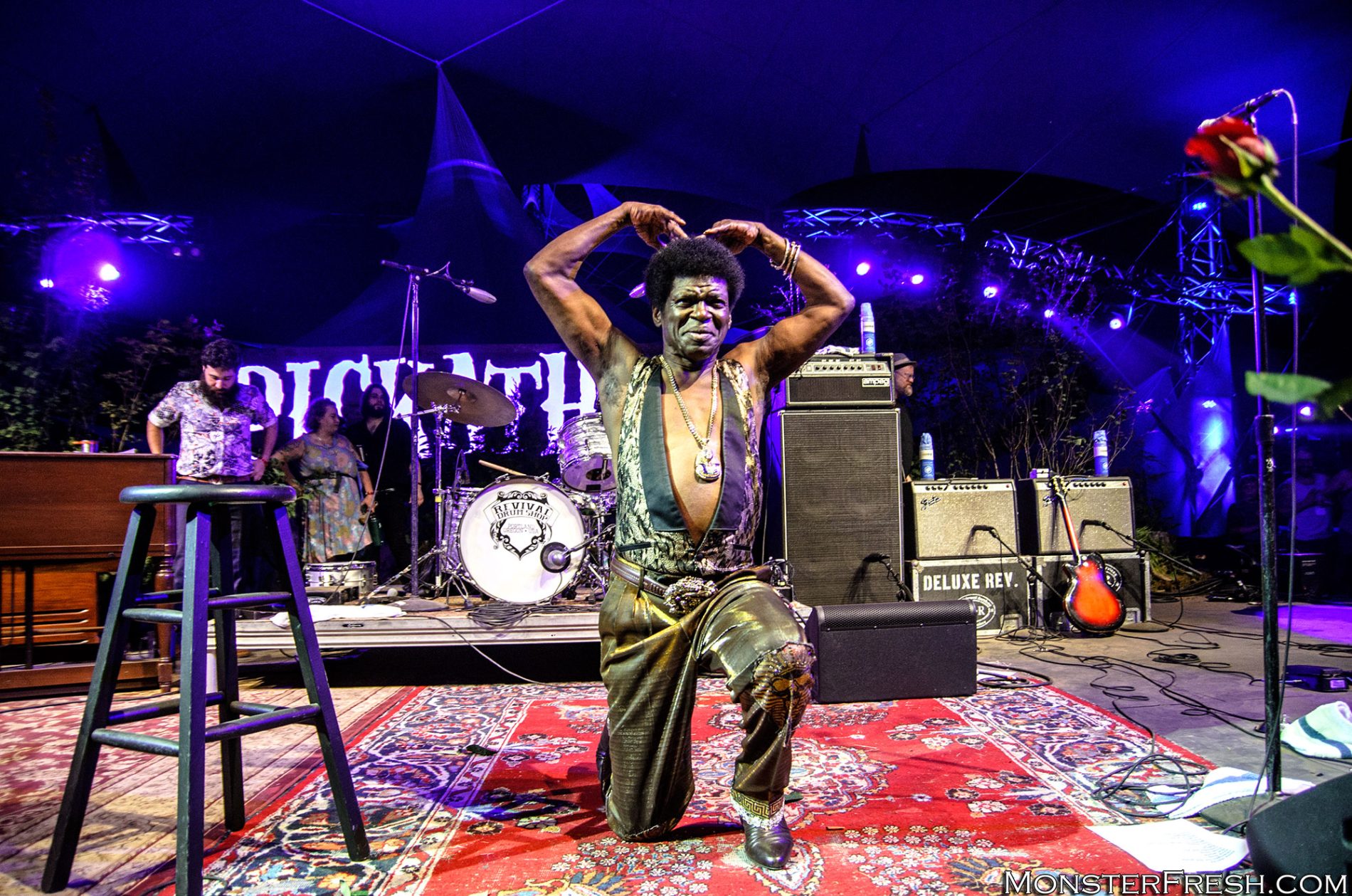
From the first year that I attended Pickathon, I felt like Charles Bradley would be the perfect fit, but when they finally booked him in 2017, I still wasn’t entirely confident that it was actually going to happen. A plethora of other shows had been canceled within the previous year, so it was no secret that Bradley was dealing with serious health complications. By some miracle, Pickathon was still able to make it happen. I don’t know how Charles was feeling that night at the farm, but if he was in pain, it definitely didn’t slow him down. It never had before. After everything he had endured in his life, it’s remarkable how he never lost his optimism or perseverance. Instead, he treated all of his challenges as fuel to encourage others and spread a message of love. The month after playing Pickathon, a different message that we all feared finally came through: Charles Bradley had passed away from stomach cancer. While the news was unquestionably heartbreaking, it’s hard not to smile when considering the way that he was able to live out those final years of his life performing on stages around the world as a beloved superstar.
I had the fortune of seeing/photographing Charles in concert a 1/2 dozen times, between 4 different cities and 3 states, from 2012 until his death. The first time experiencing that magic was obviously special, but there was also a private VIP session. Then there’s another show where I found myself alone with him afterward and he hugged me while imparting some life lesson that his uncle had given him about pushing forward. So, what made this Pickathon set so special, besides the fact that it occurred on the Thursday night of early entry? For one thing, my partner, Kim had never seen him before. Just like with Pickathon, one of the greatest things about Bradley‘s shows was watching those who were new to them fall in love with him for the first time. But, along with knowing that so many others were being blown away by their very first Charles Bradley show ever, we were pretty sure that we were seeing our very last. I heard great things about his set on the Woods stage the following night, but we didn’t bother fucking with it. What we already experienced was too perfect.
DUNGEN Performs Häxan + The Adventures of Prince Achmed [2017]

I love DUNGEN. In my opinion, the Swedish outfit has been one of the most overlooked live acts of the last two decades; partially because they have little-to-no interest in singing in English. I generally fall back on referring to their music as “pastoral psych-folk” by default, but that’s admittedly reductive for the work of a songwriter who cites 3 of his major influences as Aphex Twin, Madlib, and late Swedish organist, Bo Hansson. Initially formed as a solo project for multi-instrumentalist, Gustav Ejstes, early recordings saw him performing and producing everything at home by himself. One of the earliest musicians brought in to appear on his recordings was veteran prog rock guitarist, Reine Fiske, who remaines the most consistent contributor. Later on; bassist, Mattias Gustavsson, and drummer, Johan Holmegard would begin appearing, as well, but, more importantly, they helped round out DUNGEN‘s incarnation as a 4-piece live band, which is a very different entity. The songs are all still written by Ejstes, who maintains a strictly defined vision of how he wants everything on record, but the live shows are intended to encourage improvisation between the players, who have evolved into an increasingly brilliant and cohesive unit. DUNGEN‘s live shows are a force of nature, establishing beautifully spacial soundscapes and harmonies, while mixing elements of jazz, psych, krautrock, and prog into swirling free-form freakouts. Like the sonic equivalent of a malfunctioning weather machine, the soundtrack to a spring afternoon at a shimmering brook can suddenly shift into hail-filled tornados hurtling livestock. Knowing that they would be taking the Pickathon Woods stage was something worth getting excited about, but it was their other set on the schedule that we weren’t going to allow ourselves to miss.
Back in 2012, the Cinematheque at the Swedish Film institute commissioned Dungen to participate in their “Sounds Of Silence” project, which consists of a number of accomplished musicians from the area scoring classic arthouse films. From the provided list, the band selected the 1926 German movie, The Adventures of Prince Achmed, which is credited as the oldest surviving animated feature film, released 11 years prior to Disney’s Snow White & The Seven Dwarfs. Built around elements taken from the collection of middle eastern folk tales, One Thousand and One Nights (aka Arabian Nights), the landmark production was crafted using a shadow puppet-like silhouette animation technique invented by director, Lotte Reiniger, who hand-cut each figure and backdrop, filming it frame by frame over a 3-year period. DUNGEN‘s score for the film is titled “Häxan,” in recognition of the character of a witch in the story. The project marked the first material that was ever composed as a true collaboration between all members. The music was later paired down and released as a standalone 40-minute instrumental LP, but live shows with them actually playing along to the film were rare occasions that I never expected to have the opportunity to experience. In fact, I didn’t even know they would be performing it at Pickathon until we hit the festival grounds and saw it specified on the giant schedule.
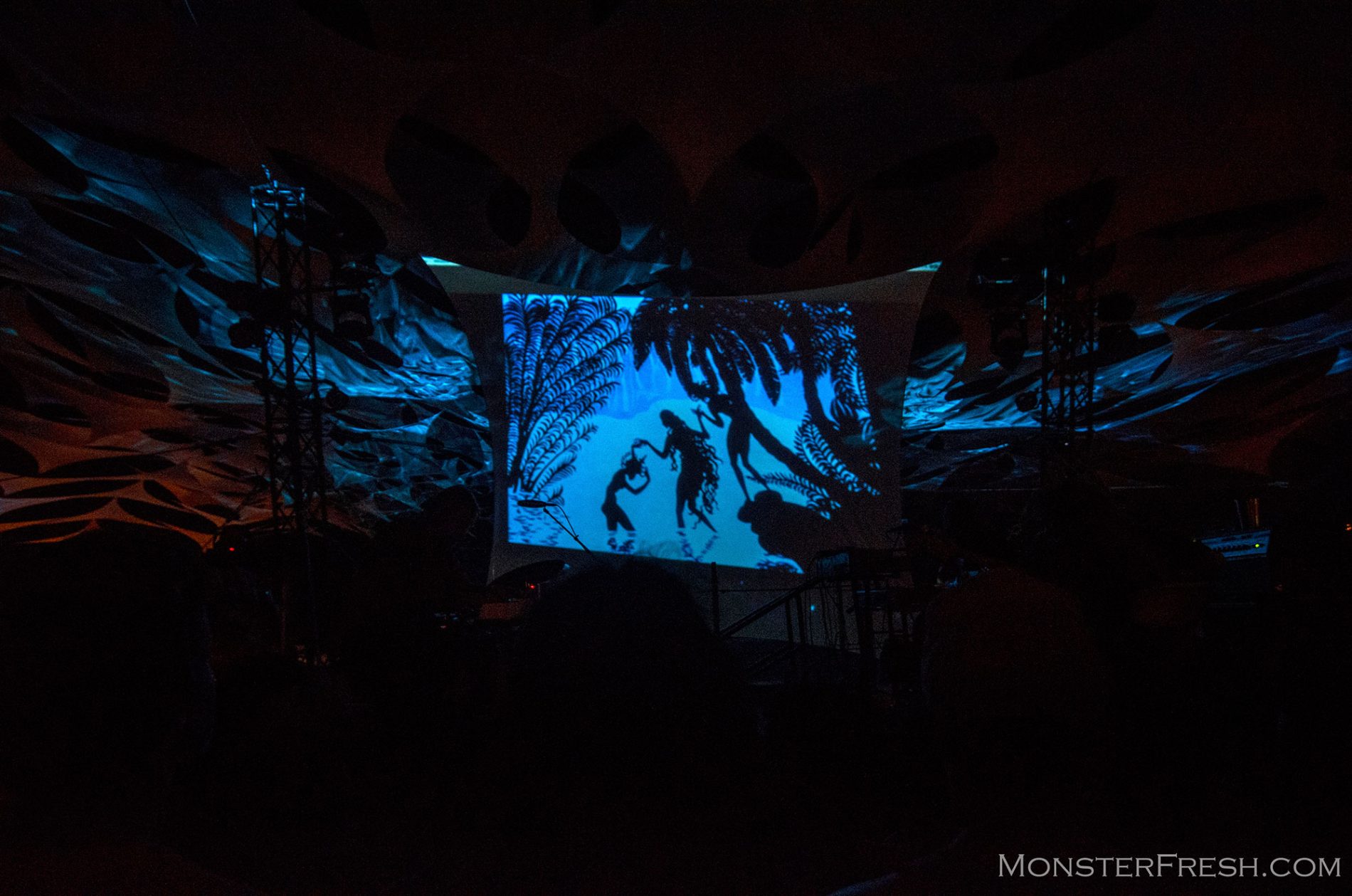
The Starlight stage was set up with a projection screen that had instruments flanking each side of it. Johan‘s drums were positioned on the back left. In front of him was Reine, holding his guitar while seated behind a Mellotron. Facing across from them would be their bandmates: Mattias on bass and Gustav with his own guitar, keys (electric piano and organ), flute, and whatever miscellaneous tricks he had in his bag. The Swedes disappeared into darkness once the film began rolling and the experience was so immersive that it was easy to forget that anyone was up there at all. In an interview with Observer, Gustav referred to the film as “the main instrument” stating that it was simply their task to support the film. Of the original classically orchestrated soundtrack that they were replacing, Reine claims, “It’s really pompous. The music doesn’t listen to the film.” What the Stockholm quartet constructed does the exact opposite, reflecting the energy and tone of each sequence it is accompanying; organically overlapping and/or transitioning from one scene to the next. It’s reminiscent of Alain Goraguer‘s soundtrack to La Planète Sauvage in its ability to set and enhance mood and suspense. Meanwhile, particular characters even have their own themes, not unlike Peter and The Wolf. With the help of soaring guitars, propulsive bass grooves, frenetic drum work, and delicate flute, the band carried us through 5 full acts, delivering one of the most mesmerizing and multi-dimensional artistic accomplishments I’ve ever experienced. The whole thing was made even more impressive the following day when Reine informed us that they couldn’t even see the screen the entire time. From where they were positioned, everything just looked “blurry.”
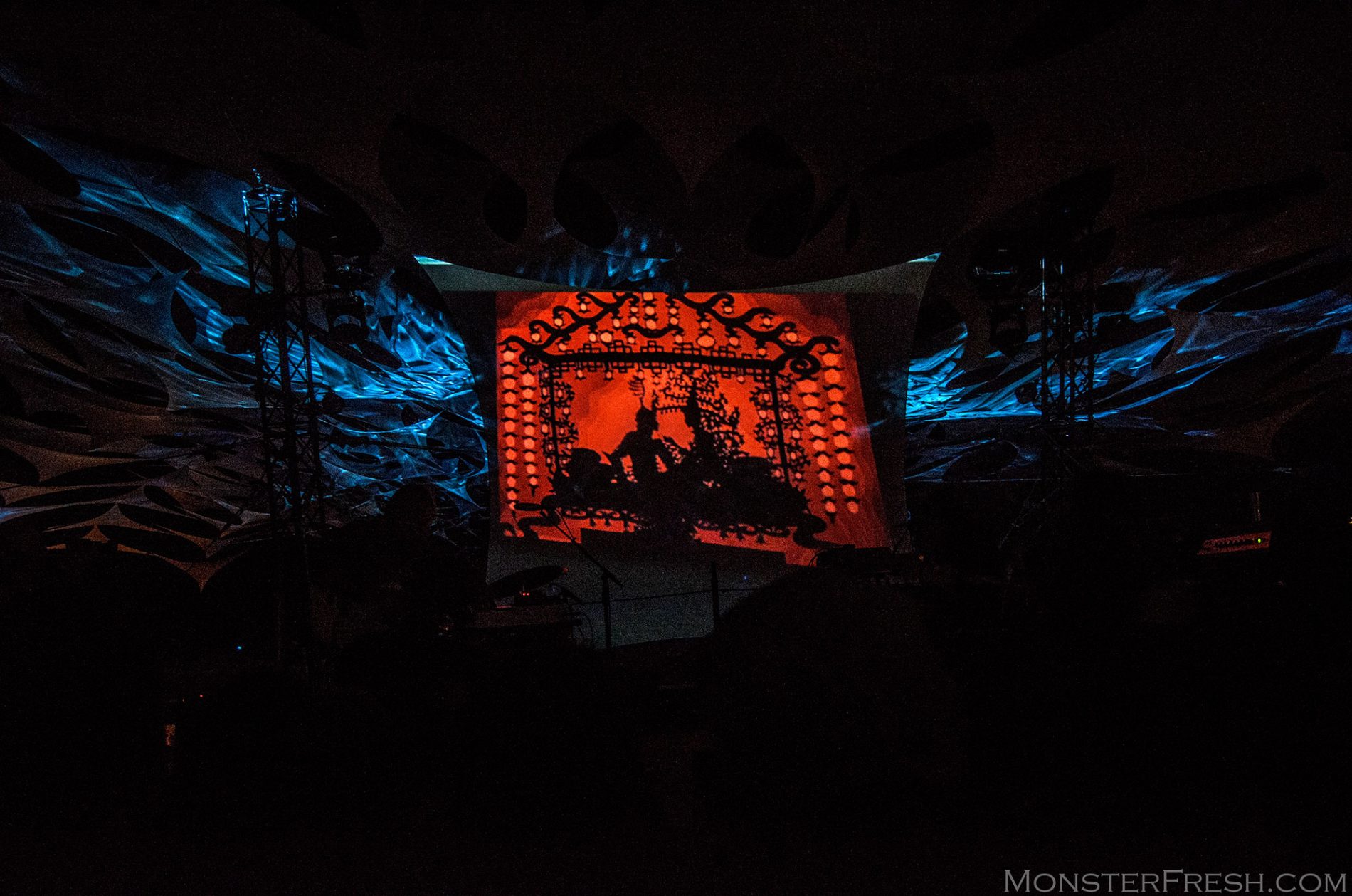
The backdrop to the Starlight stage was the trademark canopy of woven fabric that used to cover the main stage meadow. With the way that the lights played off of it, this epic fantasy felt like it extended far beyond the boundaries of the screen it was projected on. Not only was the environment where we witnessed this special, but, according to Mattias, the group had only performed the live score to the film about 15 times in total since that first screening in Sweden back in the Spring of 2013. After one last show in the California Redwoods the following week, they would be hanging it up for good. A friend of mine who’s close with the guys recorded a short clip of them performing the show at Detroit‘s Warhol Museum, so I had that brief vague reference of what to expect going in. Most people not only didn’t have that, they didn’t even have any idea who DUNGEN was. Further threatening turnout for this set was the fact it was booked at the same time as Dinosaur Jr on the Woods stage. In the end, one of the greatest aspects of the show was the way that people strolling by on their way to someplace else would be drawn in like moths to the flame, planting themselves on the cool night grass next to everyone else. Over time, they would multiply. What began as a somewhat modest crowd would gradually grow into a sea of people, becoming the largest gathering that I would ever see at the Starlight stage.
The following excerpt wasn’t filmed at Pickathon, but it should help offer an idea of the film itself.
The 5 performances that we settled on for this post weren’t necessarily our favorites, although they are among them. They didn’t necessarily contain our all-time favorite Pickathon moments, either. Each of these shows was selected for very specific reasons and for what they represent to us. In general, they all embody a very distinct element of a festival that is so varied in the way it can be experienced.
At this point, I would be remiss if I don’t mention my son’s favorite moment from the last Pickathon in 2019, which he desperately wants me to include. Kids under 12 are free and the scheduling for children is so amazing that it’s almost like its own festival. One thing that it includes is a station for the Trackers Earth camp where you can sign up for time blocks to drop your child off. We signed our son, Ronin up for a “ninja guild” and, for the last three years, I’ve heard about how he was able to throw “real shurikens” at a target and, most importantly, that one of the kids hit the target in the dick. What stuck with me more was how, after a long weekend, one of the young teachers from Trackers was able to let loose in the middle of a raging pit for YOB‘s doom metal set in the woods, and how my 7-year-old fell sound asleep during it.
The moments that I think about are things like seeing Viagra Boys frontman, Sebastian Murphy puke into a bucket onstage in the Galaxy Barn, or stumbling across Phil Lesh doing a full soundcheck to a mostly empty field. There was the time that we ran into Zale, right after Yo La Tengo‘s mindblowing acoustic show on the Woods Stage, and he had us follow him down dark trails until we reached the secret VIP Pump House area. Members of Wolf Parade were set up at a table of electronics, intent on playing some sort of acid house set, but every time they’d press out a couple of bleep-bloops, the generator would blow out and everything would go pitch black. One unforgettable moment involved us standing near an upright piano behind the Galaxy Barn at 2am when a hooded figure approached in the dark. When he sat down at the keys, I noticed his signature red Keds immediately. Mac DeMarco chopped away at the piano for only a short while, before he was dragged away by his ride full of hungry friends fiending for Denny’s.
The real moments are scattered around, appearing spontaneously like glints of sunlight reflecting off the surface of a lake. You can’t really force them and you can’t control them, but if you can, somehow, figure out how to balance the right ingredients with near-perfect ratios you can yield the ideal conditions to support their growth. The one thing that I’m sure of is that, right now, as I clack away on this laptop, Zale and his elves are out on the property playing Field Of Dreams, constructing entirely new structures that are strikingly different than anything we’ve seen up until this point. Most importantly, we’ve learned to trust the process. It’s their formula and they know when to adjust it accordingly. As long as they keep mixing up the chemicals, we’ll be there to document the explosions.